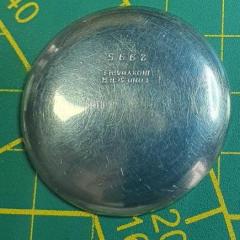Pivot Drill Size and hole for Repivot
-
Recently Browsing
- No registered users viewing this page.
-
Topics
-
Posts
-
You could try the "tapping method". Don't put any pressure on the bridge and just tap the side of the movement holder until the pivots find their place. It often works. If there is some kind of click mechanism putting pressure on one of the wheels (like the 8200 has if I remember right), use a bit of rodico to keep the click "open" and remove it later.
-
Good news is that the arbour is very hard and the screws are much softer material, so drilling out is a viable option Unfortunately we can't do the alum trick.
-
Hello, Yes, I'm up against the same dilemma on the AS 2063. I replaced the setting lever spring (which includes gears for actuating the quick-set and winding the mainspring) but have not been able to achieve that "third position" for adjusting the time. The original (broken) setting lever spring does not reveal any modifications. The force required to pull on the crown is formidable; does not seem to be correct. I've added grease without any change in the performance. Help! John
-
By Neverenoughwatches · Posted
Thanks Ross, yes i remember the broken arbor screw you had to deal with. Dont give up, if i can drill a tiny hole in a bloody hard barrel arbor without breaking the drill bit then you'll get that screw out one day somehow . -
Isn't it most correct to say that the mixture of radium decay pathway compounds found in old lume will produce both alpha and beta particle radiation as well as gamma rays, so it's over-simplistic to dismiss it all as low-energy particle emission? True, a cheap geiger counter chirping away with a raw CPM count won't specifically give you the relevant biological dose, but it makes it easy to tell the difference between your local background, a watch with a bit of activity, and one that is comparatively quite active. Each person can make their own risk analysis based on their understanding and concern, but there's nothing wrong with using an inexpensive meter to help make the determination.
-









Recommended Posts
Join the conversation
You can post now and register later. If you have an account, sign in now to post with your account.
Note: Your post will require moderator approval before it will be visible.